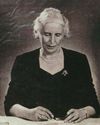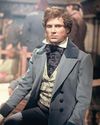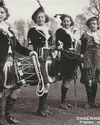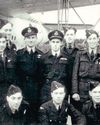
With the rapid expansion of the city of Birmingham between the world wars and the need to serve the ever-growing suburbs beyond the tramway network, Birmingham’s bus fleet saw major growth during the 1930s. In February 1931, Birmingham Corporation Tramway & Omnibus Department (BCT&OD) issued tender documents for the supply of 60 new double-deckers. The corporation was already operating double-deckers built by the London bus chassis builder AEC, and so this supplier found itself with an additional order for 60 buses.
The corporation took the opportunity to try out new technology and so, anxious to support industry within Birmingham during difficult times for the economy, the order would see 20 built by Metropolitan-Cammell Carriage, Wagon & Finance Co (MCCW) at Washwood Heath, Birmingham. These would be revolutionary metal-framed bodies employing tubing by Accles & Pollock of Oldbury, West Midlands. The belief, correctly, was that the newly designed metal frames would give longer trouble-free service and would thus be money well spent, albeit at an extra £80 per body. The larger portion of the body-building work went to Short Bros of Rochester, Kent and this was for 40 traditional wooden-framed bodies.
One of the batch which had its body constructed at Washwood Heath was fleet number 486. It was delivered to Harborne Garage where it entered service on 4 December 1931.
この記事は Best of British の April 2023 版に掲載されています。
7 日間の Magzter GOLD 無料トライアルを開始して、何千もの厳選されたプレミアム ストーリー、9,000 以上の雑誌や新聞にアクセスしてください。
すでに購読者です ? サインイン
この記事は Best of British の April 2023 版に掲載されています。
7 日間の Magzter GOLD 無料トライアルを開始して、何千もの厳選されたプレミアム ストーリー、9,000 以上の雑誌や新聞にアクセスしてください。
すでに購読者です? サインイン

Animal Magic
Hilary Middleton recalls a children's author whose tales are still enjoyed today

BACK IN TIME WITH COLIN BAKER
BoB's very own Time Lord prepares for an alternative to panto, recalls his early reading choices and having his scenes cut from two cutting edge comedies

Marvels in Miniature
Claire Saul learns about the exquisite works on display at a new exhibition being held at a historic Georgian mansion

The Last Post
Michael Foley witnessed the end of an era

The Box of Delights
Chris Hallam remembers how his Christmas 40 years ago was lit up by a magical television drama

The Queen of Stage and Screen
Chris Hallam pays tribute to actress Dame Maggie Smith

Other 07
Jonathan Sothcott looks at the seven Sir Roger Moore films that you should have in your collection

In the Best Possible Taste
Derek Lamb remembers the wireless wizardry of Kenny Everett

POSTCARD FROM BUCKINGHAMSHIRE
Bob Barton remembers a ghostly train journey, enjoys some wassailing and fulfils a long-held ambition of attending a lawnmower festival

MERCY MISSION
John Greeves recounts the remarkable exploits of Sunderland flying boat T9114